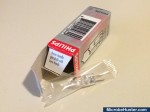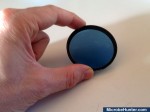
Brownian motion is the random movement of particles. This motion can be observed under the microscope, when looking at very small particles. In this case we will have a look at the fat droplets in milk.
These posts have a more theoretical approach to the subject matter. It provides a basic overview of microscope optics.

Brownian motion is the random movement of particles. This motion can be observed under the microscope, when looking at very small particles. In this case we will have a look at the fat droplets in milk.
Mounting media for microscopy can roughly be divided into those that are water soluble (aqueous) and those that are not (non-aqueous).

Microscope bulbs should never be touched with bare hands, as the grease deposited on the lamp will cause its breakage.

A blue daylight filter is able to remove red parts of the color spectrum when using tungsten or halogen lamps, giving the micrograph a cooler color.

Concave microscope slides have either one or two depressions to hold larger specimens.
Köhler (Koehler) illumination significantly increases the image quality when doing photographic work.
There are several ways in which the different microscopes objectives can be grouped.

Your compound microscope should be able to magnify from 40x to 400x (having a 4x, 10x, 40x objective).
The different colors of light do not behave equally when passing through the lens system of the objective.
Stereo microscopes are constructed differently than the “normal” microscopes.
This site uses cookies. By continuing to use the site, you agree to the use of cookies. For more information <a href= more information
The cookie settings on this website are set to "allow cookies" to give you the best browsing experience possible. If you continue to use this website without changing your cookie settings or you click "Accept" below then you are consenting to this.